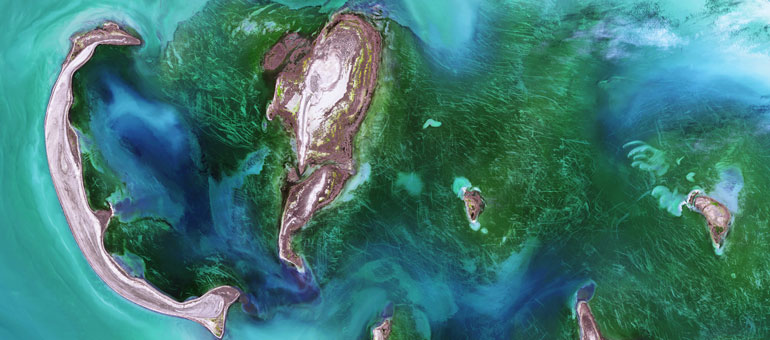Climate change and malnutrition are two of the greatest challenges facing humanity.
The UN estimates that around a third of all greenhouse gas emissions caused by humans is linked to the production, processing, packaging, and transport of food. At the same time, climate change is having a huge negative impact on our ability to ensure access to nutritious food for all, demonstrated by the devastating floods, droughts, and heatwaves experienced across the world. Climate change threatens to increase further the hundreds of millions of people who are undernourished and affected by micronutrient deficiencies.
Until recently, action taken to address climate change and malnutrition were two entirely separate conversations, with two eco-systems that did not interact. That is no longer sustainable. We cannot properly address climate change without addressing nutrition and vice versa.
That was the Government of Egypt’s motivation for launching the 'Initiative on Climate Action and Nutrition' (I-CAN) in their role as COP27 President. The aim of I-CAN is to bring together the two worlds. By tackling them in tandem, we can find viable solutions to the two biggest barriers to our long-term sustainable development.
The overarching concept is to develop a virtuous circle. We need climate action that positively impacts food, water and sanitation, social protection, and health systems, which can help deliver better nutrition. And good nutrition leads to healthy populations, which we need for thriving economies, which in turn enable us to tackle climate change effectively.
This goes to the heart of the UN’s ambitions, as laid out in the Sustainable Development Goals. This obviously addresses the SDGs covering zero hunger and climate action. But it goes wider that, to incorporate good health and well-being, clean water and sanitation and reduced inequalities. The fact it involves so many SDGs again illustrates the importance of this integration of climate and nutrition.
What is I-CAN actually doing?
It is still early days for I-CAN. At this stage, it is all about identifying the connection points where climate and nutrition communities can effectively come together and raising awareness about why this is so critical. The broad aim is to engage with governments, financial institutions, international organisations and wider civil society to persuade them to integrate climate and nutrition in their policies, investment and activities.
The narrative around the integration of climate and nutrition is startlingly obvious. That’s the easy part. We already have many tools, guidance, and examples of action spanning these two critical themes. The harder part is taking them to scale with stable, long term financing for durable solutions.
We can improve our understanding what is happening in nutrition and climate action today. I-CAN partners are working on a set of indicators to develop the baseline, from which we can track progress across policy, research and investments. These indicators include for example how many Nationally Determined Contributions have a nutrition element; how many national nutrition plans include climate action; and the amount of money and projects funded by the World Bank and through Official Development Assistance that involve both climate and nutrition.

Until recently, action taken to address climate change and malnutrition were two entirely separate conversations, with two eco-systems that did not interact. That is no longer sustainable. © USGS / Unsplash
This information will give us the ability to help set targets for the next 10, 15 or 20 years, and to start measuring action against those targets.
Clearly, what matters most is that this activity turns into real change that has a positive impact. There is so much to be done that listing all the potential activity would take up much more space than I have here. But to give you a flavour, one area of focus has to be healthy diets. We know they are good for nutrition. We also know they typically have less environmental impact, as do more diverse diets.
Food waste is another area. And it always surprises me it isn’t higher on either of the climate or food agendas. The general consensus is that around one third of all food produced is wasted. One third! That’s about 2.5 billion tonnes each year. It’s obviously a huge waste of nutrients that could help all those people who don’t have enough to eat. It’s also a waste of all the resources that have gone into producing it, transporting it and retailing it.
Building a new alliance
And there will be plenty more areas that need to be addressed by new policies and actions. They can only realistically be addressed by the climate and nutrition communities working together. Put together, climate and nutrition present one of our greatest challenges. We have to work together to devise and deliver our greatest response. I-CAN is a resource for governments and partners to combine forces and address multiple national priorities simultaneously through integrated action for both climate and nutrition.